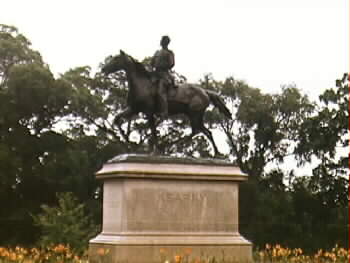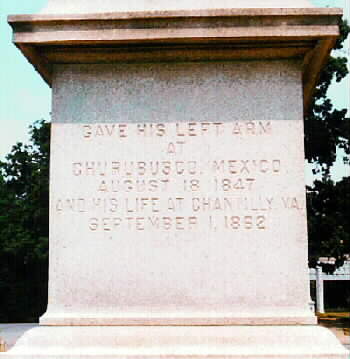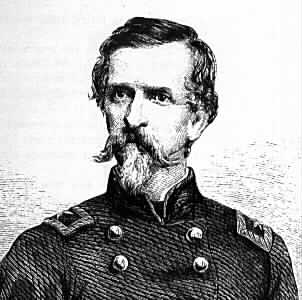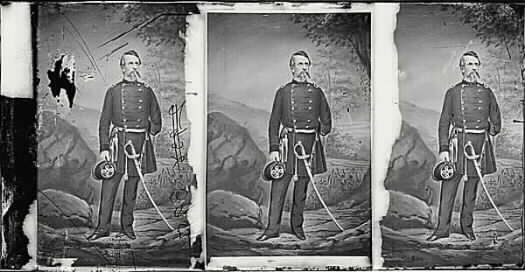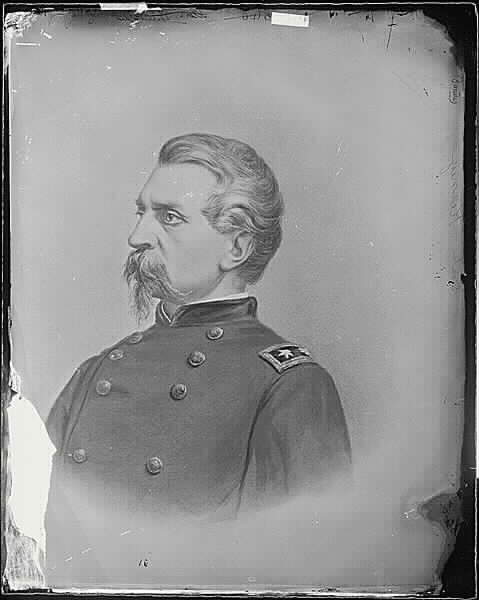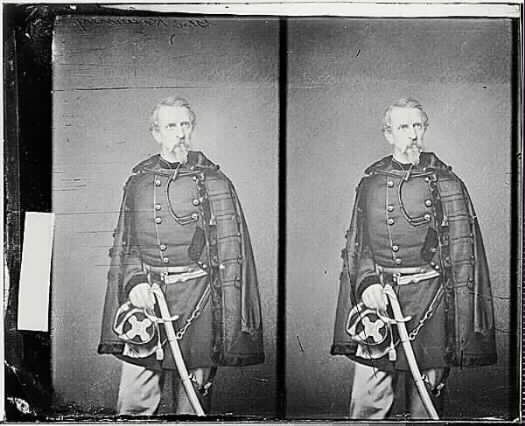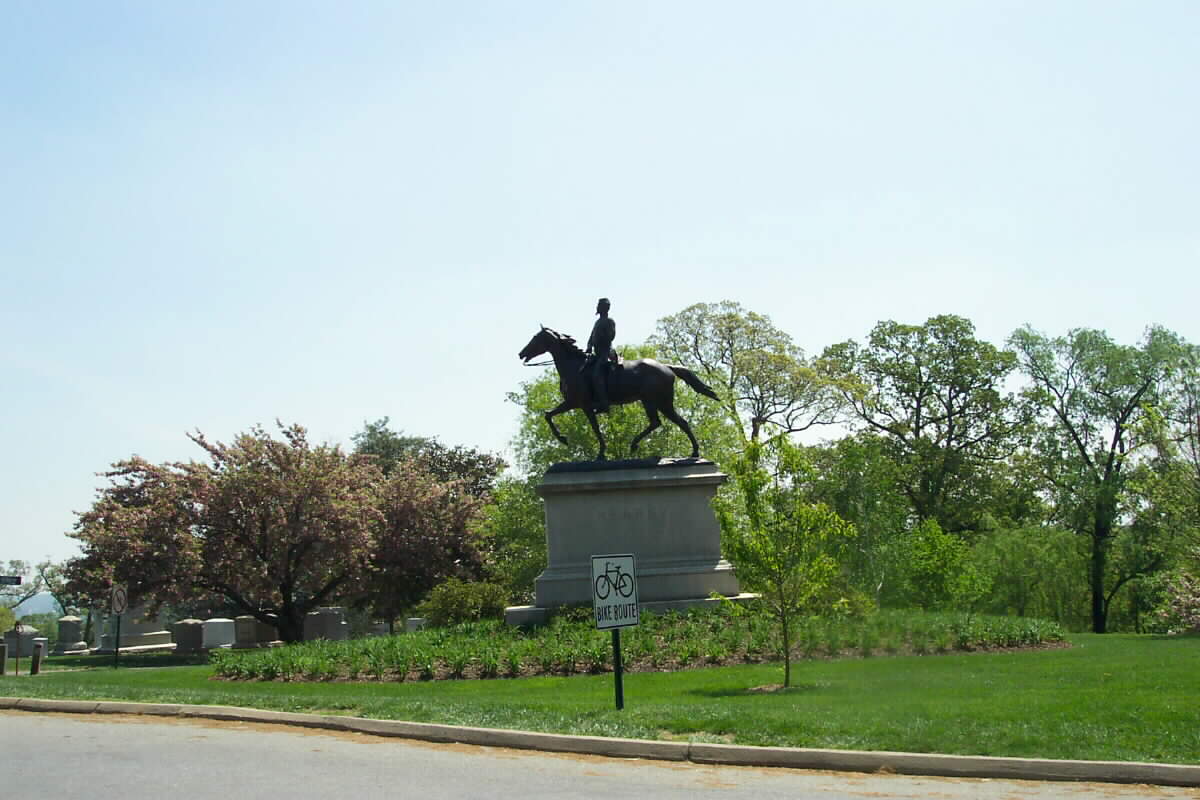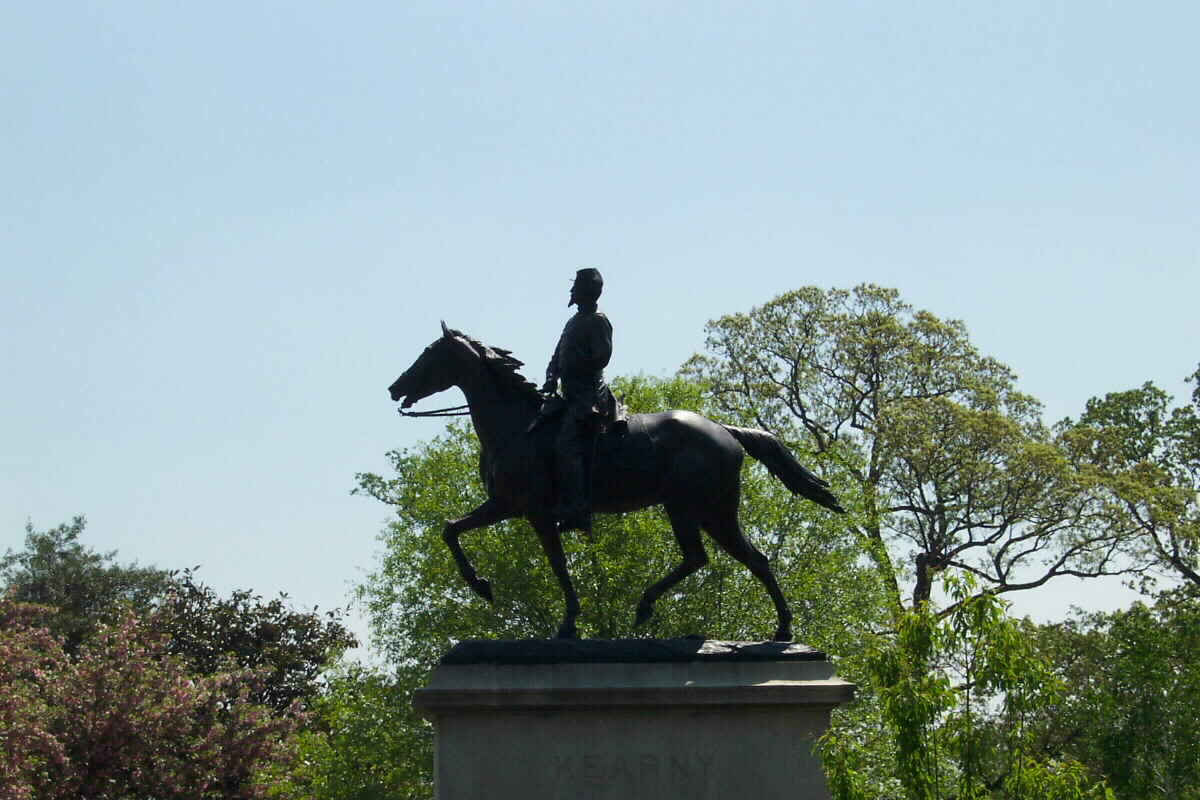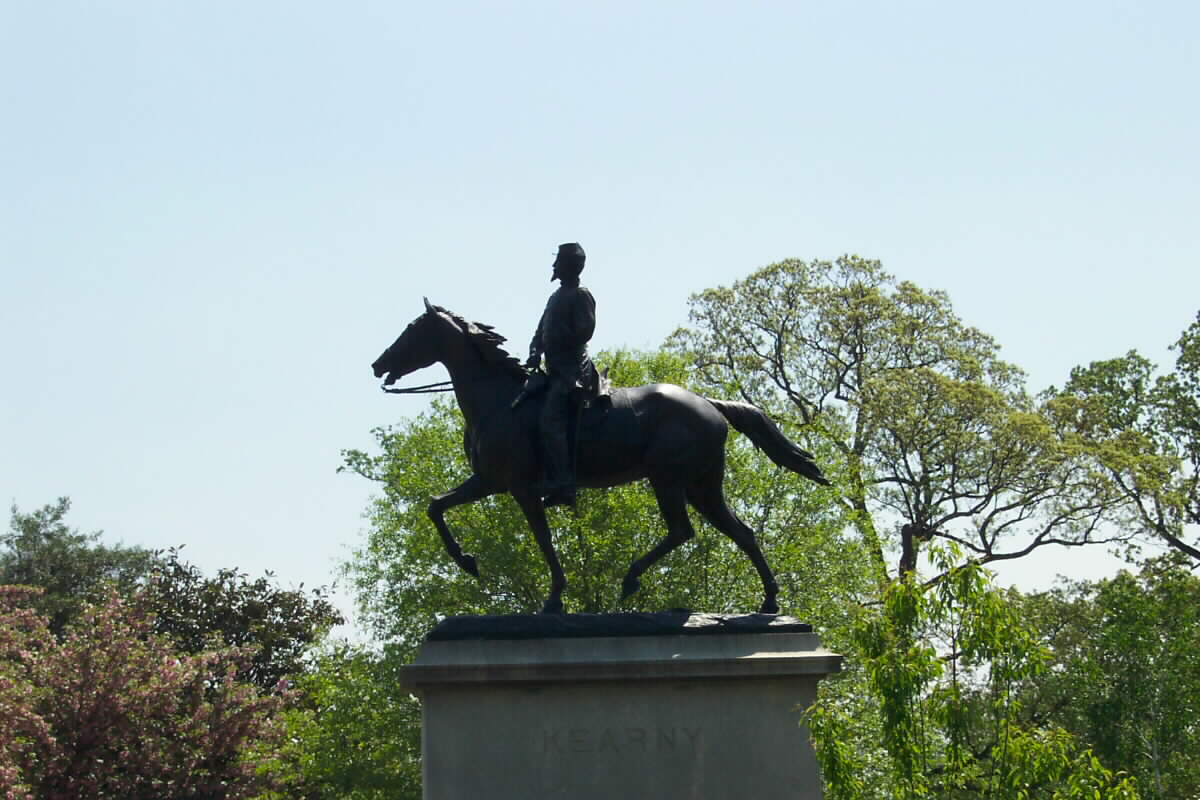Born at New York City, June 2, 1815, the scion of great wealth and social position, the nephew of General Stephen W. Kearny of Mexican War fame. In his early years he attended private schools, and graduated from Columbia University, 1833, studied law, traveled widely.
In 1836 he inherited one million dollars from his grandfather and at once embraced military career which had been his goal since boyhood. A superb horseman, he was commissioned a Second Lieutenant in his uncle’s regiment, the 1st Dragoons, 1837. In 1839 attended the French Cavalry School at Saumur, saw action with Chasseurs d’ Afrique in Algiers in 1840, and after return to the United States acted as Aide-de-Camp successively to Alexander Macomb and Winfield Scott, generals-in-chief of army. In 1846 his company served as escort for Scott during advance on Mexico City, and at Churubusco his left arm was shattered, necessitating amputation. For gallant conduct he was breveted Major.
After later service in California he resigned the from army in 1851 and went around the world. He had also resigned on April 5, 1846, but reinstated 5 weeks later upon outbreak of Mexican War.
Following several years spent on his New Jersey estate, he went abroad again in 1859 and served in Napoleon III’s Imperial Guard during the Italian War. He is said to have taken part in every Cavalry charge at Magenta and Solferino with the reins clenched in his teeth.
When the Civil War broke out, he hurried home and offered his services. He was among the first Brigadier Generals of Volunteers appointed (August 7 to rank from May 17, 1861) and was assigned to command a brigade of New Jersey regiments in Franklin’s Division. During the course of the Peninsular campaign in the spring of 1862, he rose to command of the Division of Cavalry in Samuel P. Heintzelman’s III Corps and was made a Major General as of July 4, 1862. At close of 2nd Manassas campaign, during the indecisive engagement of Chantilly (Ox Hill) September 1, 1862, he inadvertently rode into the Confederate lines and was killed instantly by a rifle ball as he wheeled and spurred off.
He was the originator of the “Kearny Patch,” the forerunner of the corps badges later developed by General Daniel Butterfield, and was termed by General Scott “the bravest man I ever knew, and a perfect soldier.” His remains, forwarded under a flag of truce by Robert E. Lee, were first buried in Trinity Churchyard in New York City, but on April 12, 1912 were moved to Arlington National Cemetery. His grave is marked by one of only two equestrian statues in the cemetery and was a gift of the people of New Jersey in 1914. The statue was designed-built by Edward Clark Potter.
Section 2, Special site.
Washington Post
April 7 1912
GRAVE HERE FOR HERO
Body of Maj. Kearny Will Be Brought From New York.
TRANSFER AFTER FIFTY YEARS
Remains of Fighter Who Took Part in Four Wars, Won Daring Battle With Mexicans, and Was Slain in 1862, Will Be Buried With Full Military Honors.
The body of Major General Phil Kearny, a hero of four wars, which for 50 years has lain in a grave in Trinity Cemetery, New York, will be buried in Arlington Cemetery on April 11 after full military services. The grave will be adjacent to that of General George A. Cook, a famous Indian fighter and hero of the Mexican war. An oration by “Corpl.” James Tanner, register of wills for the District; prayers, and brief remarks by prominent army officers and music by the Fort Myer Band will constitute the program.
Maj. Kearny won laurels in the Mexican war, when he led a company of men against three times its number and won the battle. Several times he was conspicuous in this war, and when the civil war broke out he was among the first to offer his services. He was appointed major general in a volunteer, New York regiment.
Shot From His Horse.
While reconnoitering the position of the Southern forces on September 1, 1862, he was shot from his horse. Sent into the Union lines by the enemy, the body was brought to Washington, where the highest tribute of respect was paid to it. Finally it was taken to New York and buried in Trinity Cemetery, but a short distance from his birthplace, at 3 Broadway.
Plans for the removal of the body were made by Governor Wilson of New Jersey, who appointed a commission and procured an appropriation for the purpose. Following the interment in Arlington, plans will be made for the erection at a suitable monument to mark the grave of the famous fighter.
Kearny at Seven Pines
by Edmund Clarence Stedman (1833-1908)
So that soldierly legend is still on its journey,—
That story of Kearny who knew not to yield!
‘Twas the day when with Jameson, fierce Berry, and Birney,
Against twenty thousand he rallied the field.
Where the red volleys poured, where the clamor rose highest,
Where the dead lay in clumps through the dwarf oak and pine,
Where the aim from the thicket was surest and nighest,—
No charge like Phil Kearny’s along the whole line.
When the battle went ill, and the bravest were solemn,
Near the dark Seven Pines, where we still held our ground,
He rode down the length of the withering column,
And his heart at our war cry leapt up with a bound;
He snuffed, like his charger, the wind of the powder,—
His sword waved us on and we answered the sign;
Loud our cheer as we rushed, but his laugh rang the louder,
“There’s the devil’s own fun, boys, along the whole line!”
How he strode his brown steed! How we saw his blade brighten
In the one hand still left,—and the reins in his teeth!
He laughed like a boy when the holidays heighten,
But a soldier’s glance shot from his visor beneath.
Up came the reserves to the melee infernal,
Asking where to go in—through the clearing or pine?
“O, anywhere! Forward! ‘Tis all the same, Colonel:
You’ll find lovely fighting along the whole line!”
O, evil the black shroud of night at Chantilly,
That hid him from sight of his brave men and tried!
Foul, foul sped the bullet that clipped the white lily,
The flower of our knighthood, the whole army’s pride!
Yet we dream that he still,—in that shadowy region
Where the dead form their ranks at the wan drummer’s sign,—
Rides on, as of old, down the length of his legion,
And the word is still Forward! along the whole line.
Michael Robert Patterson was born in Arlington and is the son of a former officer of the US Army. So it was no wonder that sooner or later his interests drew him to American history and especially to American military history. Many of his articles can be found on renowned portals like the New York Times, Washingtonpost or Wikipedia.
Reviewed by: Michael Howard

